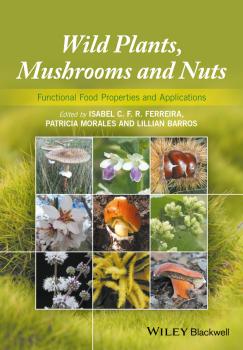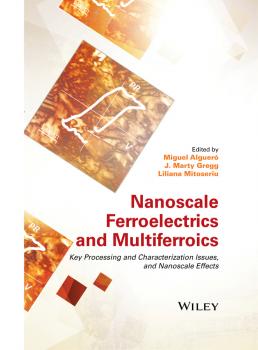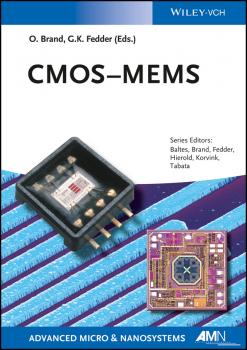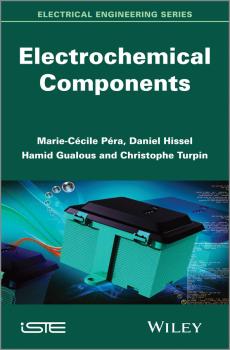Техническая литература
Различные книги в жанре Техническая литератураAdvanced Surfaces for Stem Cell Research
The book outlines first the importance of Extra Cellular Matrix (ECM), which is a natural surface for most of cells. In the following chapters the influence of biological, chemical, mechanical, and physical properties of surfaces in micro and nano-scale on stem cell behavior are discussed including the mechanotransduction. Biomimetic and bioinspired approaches are highlighted for developing microenvironment of several tissues, and surface engineering applications are discussed in tissue engineering, regenerative medicine and different type of biomaterials in various chapters of the book. This book brings together innovative methodologies and strategies adopted in the research and development of Advanced Surfaces in Stem Cell Research. Well-known worldwide researchers deliberate subjects including: Extracellular matrix proteins for stem cell fate The superficial mechanical and physical properties of matrix microenvironment as stem cell fate regulator Effects of mechanotransduction on stem cell behavior Modulation of stem cells behavior through bioactive surfaces Influence of controlled micro and nanoengineered surfaces on stem cell fate Nanostructured polymeric surfaces for stem cells Laser surface modification techniques and stem cells applications Plasma polymer deposition: a versatile tool for stem cell research Application of bioreactor concept and modeling techniques in bone regeneration and augmentation treatments Substrates and surfaces for control of pluripotent stem cell fate and function Application of biopolymer-based, surface modified devices in transplant medicine and tissue engineering Silk as a natural biopolymer for tissue engineering
Wild Plants, Mushrooms and Nuts. Functional Food Properties and Applications
Wild Plants, Mushrooms and Nuts: Functional Properties and Food Applications is a compendium of current and novel research on the chemistry, biochemistry, nutritional and pharmaceutical value of traditional food products, namely wild mushrooms, plants and nuts, which are becoming more relevant in diets, and are especially useful for developing novel health foods and in modern natural food therapies. Topics covered will range from their nutritional value, chemical and biochemical characterization, to their multifunctional applications as food with beneficial effects on health, though their biological and pharmacological properties (antioxidant, antibacterial, antifungal, antitumor capacity, among others).
Nanoscale Ferroelectrics and Multiferroics. Key Processing and Characterization Issues, and Nanoscale Effects, 2 Volumes
This two volume set reviews the key issues in processing and characterization of nanoscale ferroelectrics and multiferroics, and provides a comprehensive description of their properties, with an emphasis in differentiating size effects of extrinsic ones like boundary or interface effects. Recently described nanoscale novel phenomena are also addressed. Organized into three parts it addresses key issues in processing (nanostructuring), characterization (of the nanostructured materials) and nanoscale effects. Taking full advantage of the synergies between nanoscale ferroelectrics and multiferroics, the text covers materials nanostructured at all levels, from ceramic technologies like ferroelectric nanopowders, bulk nanostructured ceramics and thick films, and magnetoelectric nanocomposites, to thin films, either polycrystalline layer heterostructures or epitaxial systems, and to nanoscale free standing objects with specific geometries, such as nanowires and tubes at different levels of development. This set is developed from the high level European scientific knowledge platform built within the COST (European Cooperation in Science and Technology) Action on Single and multiphase ferroics and multiferroics with restricted geometries (SIMUFER, ref. MP0904). Chapter contributors have been carefully selected, and have all made major contributions to knowledge of the respective topics, and overall, they are among most respected scientists in the field.
Circuit Oriented Electromagnetic Modeling Using the PEEC Techniques
Bridges the gap between electromagnetics and circuits by addressing electrometric modeling (EM) using the Partial Element Equivalent Circuit (PEEC) method This book provides intuitive solutions to electromagnetic problems by using the Partial Element Equivalent Circuit (PEEC) method. This book begins with an introduction to circuit analysis techniques, laws, and frequency and time domain analyses. The authors also treat Maxwell's equations, capacitance computations, and inductance computations through the lens of the PEEC method. Next, readers learn to build PEEC models in various forms: equivalent circuit models, non-orthogonal PEEC models, skin-effect models, PEEC models for dielectrics, incident and radiate field models, and scattering PEEC models. The book concludes by considering issues like stability and passivity, and includes five appendices some with formulas for partial elements. Leads readers to the solution of a multitude of practical problems in the areas of signal and power integrity and electromagnetic interference Contains fundamentals, applications, and examples of the PEEC method Includes detailed mathematical derivations Circuit Oriented Electromagnetic Modeling Using the PEEC Techniques is a reference for students, researchers, and developers who work on the physical layer modeling of IC interconnects and Packaging, PCBs, and high speed links.
Electrometallurgy 2012
Proceedings of a symposium sponsored by The Metallurgy and Materials Society of CIM and the Hydrometallurgy and Electrometallurgy Committee of the Extraction and Processing Division of TMS (The Minerals, Metals & Materials Society) Held during the TMS 2012 Annual Meeting & Exhibition Orlando, Florida, USA, March 11-15, 2012
CMOS - MEMS
This edition of 'CMOS-MEMS' was originally published in the successful series 'Advanced Micro & Nanosystems'. Here, the combination of the globally established, billion dollar chip mass fabrication technology CMOS with the fascinating and commercially promising new world of MEMS is covered from all angles. The book introduces readers to this fi eld and takes them from fabrication technologies and material charaterization aspects to the actual applications of CMOS-MEMS – a wide range of miniaturized physical, chemical and biological sensors and RF systems. Vital knowledge on circuit and system integration issues concludes this in-depth treatise, illustrating the advantages of combining CMOS and MEMS in the first place, rather than having a hybrid solution.
LTE Security
A concise, updated guide to the 3GPP LTE Security Standardization specifications A welcome Revised Edition of the successful LTE Security addressing the security architecture for SAE/LTE, which is based on elements of the security architectures for GSM and 3G, but which needed a major redesign due to the significantly increased complexity, and different architectural and business requirements of fourth generation systems. The authors explain in detail the security mechanisms employed to meet these requirements. The specifications generated by standardization bodies only inform about how to implement the system (and this only to the extent required for interoperability), but almost never inform readers about why things are done the way they are. Furthermore, specifications tend to be readable only for a small group of experts and lack the context of the broader picture. The book fills this gap by providing first hand information from insiders who participated in decisively shaping SAE/LTE security in the relevant standardization body, 3GPP, and can therefore explain the rationale for design decisions in this area. A concise, fully updated guide to the 3GPP LTE Security Standardization specifications Describes the essential elements of LTE and SAE Security, written by leading experts who participated in decisively shaping SAE/LTE security in the relevant standardization body, 3GPP Explains the rationale behind the standards specifications giving readers a broader understanding of the context to these specifications Includes new chapters covering 3GPP work on system enhancements for MTC, plus application layer security in ETSI TC M2M and embedded smart card in ETSI SCP; Security for Machine-type Communication, Relay Node Security, and Future Challenges, including Voice over LTE, MTC, Home base stations, LIPA/SIPTO, and New Cryptographic Algorithms Essential reading for System engineers, developers and people in technical sales working in the area of LTE and LTE security, communication engineers and software developers in mobile communication field.
Electrochemical Components
This book focuses on the methods of storage commonly used in hybrid systems. After an introductory chapter reviewing the basics of electrochemistry, Chapter 2 is given over to the storage of electricity in the form of hydrogen. Once hydrogen has been made, we have to be able to convert it back into electricity on demand. This can be done with another energy converter: a fuel cell, the subject of Chapter 3. Such a system is unable to deliver significant dynamics in terms of storage and release of electricity and needs to be supplemented with another solution: a detailed study of supercapacitors is provided in Chapter 4.While the storage systems touched upon in the previous three chapters (hydrogen batteries and supercapacitors) both exhibit advantageous characteristics, at present they are still relatively costly. Thus, the days of the electrochemical accumulator by no means appear to be numbered just yet. This will therefore be the topic of Chapter 5. Finally, on the basis of the elements laid down in the previous chapters, Chapter 6 will focus on electrical hybridization of these storage systems, with a view to enhancing the performance (in terms of energy, lifetime, cost, etc.) of the newly formed system. Aimed at an audience of researchers, industrialists, academics, teachers and students, many exercises, along with corrected solutions, are provided throughout the book. Contents 1. Basic Concepts of Electrochemistry used in Electrical Engineering. 2. Water Electrolyzers. 3. Fuel Cells. 4. Electrical Energy Storage by Supercapacitors. 5. Electrochemical Accumulators. 6. Hybrid Electrical System. About the Authors Marie-Cécile Péra is a Full Professor at the University of Franche-Comte in France and Deputy Director of the FEMTO-ST Institute (CNRS). Her research activities include modeling, control and diagnosis of electric power generation systems (fuel cells – PEMFC and SOFC, supercapacities, batteries) for transportation and stationary applications. She has contributed to more than 180 articles in international journals and conferences. Daniel Hissel is Full Professor at the University of Franche-Comte in France and Director of the Fuel Cell Lab Research Federation (CNRS). He also leads a research team devoted to hybrid electrical systems in the FEMTO-ST Institute (CNRS). He has published more than 250 research papers on modeling, control, diagnostics and prognostics of hybrid electrical systems. Hamid Gualous is Full Professor at the University of Caen Lower Normandy in France and director of the LUSAC laboratory. His current research interests include power electronics, electric energy storage, power and energy systems and energy management. Christophe Turpin is Full Researcher at the CNRS (French National Center for Scientific Research). He is responsible for hydrogen activities within the Laboratory LAPLACE, Toulouse, France. His research activities include the characterization and modeling of fuel cells and electrolyzers, the state of health of these components, and their hybridization with other electrochemical components (ultracapacitors, batteries) within optimized energy systems for stationary and aeronautical applications.
Intelligent Nanomaterials
Overall, this book presents a detailed and comprehensive overview of the state-of-the-art development of different nanoscale intelligent materials for advanced applications. Apart from fundamental aspects of fabrication and characterization of nanomaterials, it also covers key advanced principles involved in utilization of functionalities of these nanomaterials in appropriate forms. It is very important to develop and understand the cutting-edge principles of how to utilize nanoscale intelligent features in the desired fashion. These unique nanoscopic properties can either be accessed when the nanomaterials are prepared in the appropriate form, e.g., composites, or in integrated nanodevice form for direct use as electronic sensing devices. In both cases, the nanostructure has to be appropriately prepared, carefully handled, and properly integrated into the desired application in order to efficiently access its intelligent features. These aspects are reviewed in detail in three themed sections with relevant chapters: Nanomaterials, Fabrication and Biomedical Applications; Nanomaterials for Energy, Electronics, and Biosensing; Smart Nanocomposites, Fabrication, and Applications.
Fish Vaccination
Fish farming, in seawater and in freshwater, in cages, tanks or ponds, makes an ever-increasing and significant contribution to the production of aquatic food in many regions of the world. During the last few decades there has been significant progress and expansion in the aquaculture sector, characterized by intensified production and the exploitation of many new species. Aquaculture must be a sustainable bio-production, environmentally as well as economically. Disease prevention in order to reduce losses, and the use of antimicrobials is crucial in this perspective. Vaccination has, in a few years, become the most important method for disease prevention in aquaculture, and effective prophylaxis based on stimulation of the immune system of the fish is essential for further development of the industry. This book provides general information about disease prevention in fish by vaccination, as well as specific descriptions of the correct use of vaccines against the most important bacterial and viral infectious diseases of aquatic animals. The book is written by some of the world’s leading experts in the subject, drawn from many countries where aquaculture is a significant and expanding part of the economy. Fish Vaccination is an encyclopedia of fish vaccinology for every present and future aquaculturist. Professionals in the aquaculture sector, including fish veterinarians and fish biologists, within the industry, in scientific institutions and regulatory authorities will all find a huge wealth of commercially important knowledge within this book. Libraries in all universities where aquaculture, biological and veterinary sciences are studied and taught should have copies of this important book on their shelves.









